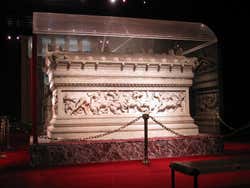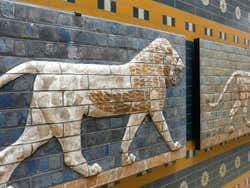
Archaeological Museum
The Istanbul Archaeological Museum is one of the most important in its field. It was founded by the Turkish painter and archeologist Osman Hamdi in 1891.
The origins of the Istanbul Archeological Museum go back to a small collection of antiques which was installed in the Topkapi Palace in 1846, and in 1869 it was converted into a museum in its own right.
In 1891, the Archaeological Museum opened its doors, and in doing so became the first museum in Turkey. It's found between the first courtyard of the Topkapi Palace and Gülhane Park.
Collection
The museum collection is divided into three parts:
- Archaeological Museums: these museums play host to some world-renowned objects, the most important of which is the large collection of sarcophagi, including the Alexander Sarcophagus from the 4th century.
- Collection of Oriental Art: in this section, you'll find Ottoman tombs and findings from the Egyptian, Sumerian, and Akkadian empires. The most valuable parts of this collection are the fragments of the Ishtar Gate.
- Ceramic and Jewel Collection: this collection can be found in the Tiled Pavillion, a building built under the orders of Mehmed II. This part of the museum has relatively few halls, therefore perhaps the most interesting part is the building itself.
Our Opinion
With its major sarcophagus collection and an enormous collection of exhibits, the Archeological Museum is a delight for all lovers of antiques: the Alexander Sarcophagus and the Meleager Sarcophagus are breathtaking.
If there's one downside to the museum, it would be its state of conservation—some rooms seem somewhat neglected and have a rather gloomy appearance. The upper floors of the Archaeological Museum are not as interesting as the rest of the museum.


Schedule
Tuesday to Sunday: from 9 am to 6 pm.
Price
Price per person: 574 TL (US$ 15.08)
Transport
Tram: Gülhane, line T1.
Nearby places
Gülhane Park (214 m) Topkapi Palace (280 m) Hagia Sophia (363 m) Basilica Cistern (470 m) Blue Mosque (800 m)
